I’m looking for advice on how to hand mill long boards. In this case, an 82×8” hard maple bed rail. All of the articles I’ve found in the archives use much smaller pieces.
I spent a lot of time at the lumber yard picking out the straightest stock. So, I’m pretty close to start with. A couple of the questions I have are:
-
Do I remove all of the rough on both sides first before addressing any warping. Or, do I focus on just one side?
-
How to make it straight? Using an 8’ straight edge, I found the straightness of the board changes a good bit when laying flat verses being on edge.
Ideally, I only need to get one side flat and straight. At that point, I can flip it over and run it through my 13” thickness planer.
Thanks,
Dennis
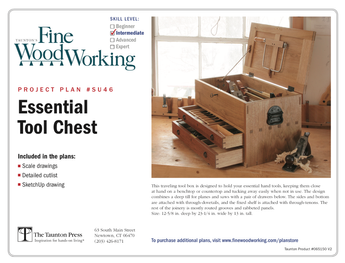
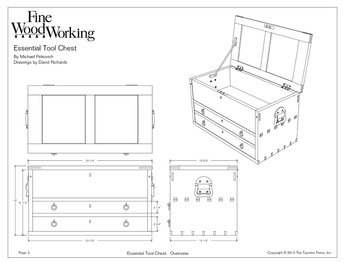
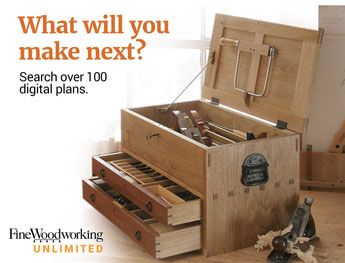
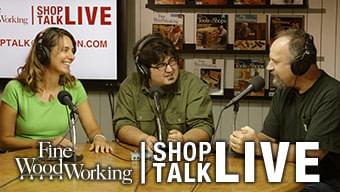
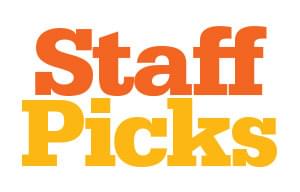









Replies
Work on one side only (the convex side, shimmed as below), since you have a thickness planer. Get that side flat but not cleaned up completely; just cleaned up enough that the board is supported well on that side by the planer table. Then skim the other side with your thickness planer until it is close to cleaned up. If the board is straight, take small, equal amounts off both sides until it is cleaned up, making sure it is straight after each pair of cuts. If it is not straight, straighten one side again by hand before running the other side thru the planer. If it is slightly bowed when vertical but it lays flat on its face, measure how far from flat it is in the middle, and shim the middle that amount when it is flat on the bench as you hand flatten your primary side.
Proceed as gradually as you can, even waiting a day or two between flattening and planing each time to let internal stresses ease. Always leave it either on edge or on strips if laid flat so air can get to both sides equally. Don't leave it in the sun!
You will be helped a lot if you have a relatively long hand plane -- #7, or 8. #6 might work if that is what you have. Shorter planes will try to leave a dip.
If the board will be used in an assembly that will hold it flat you just have to get one side flat, then get the other parallel using the planer. If the board will be unsupported and it's more wonky standing on edge it might be the wrong board for that spot.
First you need a flat surface at least as big as the board. lay the board down on both sides and rock it. Work on the side with the least wobble.
Make note of the high spots, make some plane passes and flip it to check it. Repeat until it lies flat. Be aggressive early and work across and diagonal to the grain. As you get close work neater to remove bumps. Don't go nuts, you'll be flipping it in the planer for final cleanup.
how thick is this piece of maple? 82" run is a long way and maple can warp pretty good. Honestly you might not be able to "get it flat" without making it a 1/16" ...
Thanks for the advice. I was planning the concave side without shims on the opposite side. First mistake. I'll switch to the convex side and add shims. I'm working on an 8'x2’ piece of MDF that's laying on my workbench with the overhang supported. I've checked to make sure it's flat.
What should be my expectations for flatness? Is ⅛” over 82” close enough? I spent my career in the computer sciences and not once did I find in a design spec the phrase “close enough.” So, I do have a tendency to be overly anal about this stuff. If I had to make a living from making furniture, I would probably starve.
I'm starting with 5/4. The goal is to end up with a thickness of ⅞ or greater.
Thanks,
Dennis
Do the math on your thickness... if you are removing just 1/8 from the less wonky side you will be cutting it VERY close to hit 7/8 final thickness.
Since it's a bed rail you might be able to get one side flat and not bother going for a coplanar back side to preserve thickness. If the only one that will ever see it is the edge of your mattress, does it matter?